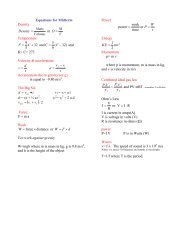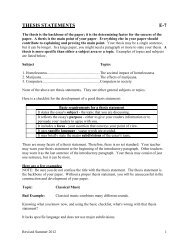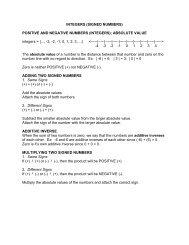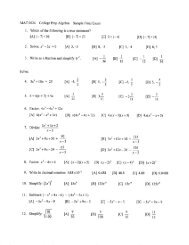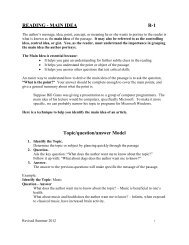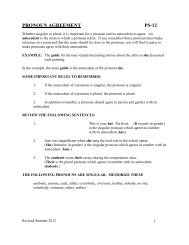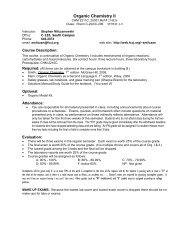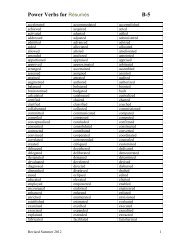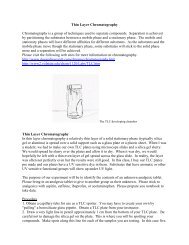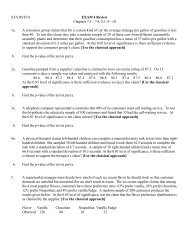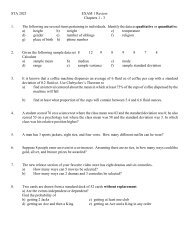Saponification: The preparation of Soap
Saponification: The preparation of Soap
Saponification: The preparation of Soap
- No tags were found...
Create successful ePaper yourself
Turn your PDF publications into a flip-book with our unique Google optimized e-Paper software.
Synthetic detergents differ from soaps in that they are salts o long-chain alkyl sulfuricacids or alkylbenzenesulfonic acids, rather than carboxylic acids.OCH 3 (CH 2 ) 10 -CH 2 -OSOHOCH 3CH 3 (CH 2 ) 10 -CH-OS-OHOFigure 2 Alkyl sulfuric acid (left) and alkylbenzenesulfonic acid (right)OCH 3 (CH 2 ) 10 -CH 2 -OSO - Na +OCH 3CH 3 (CH 2 ) 10 -CH-OS-O - Na +OFigure 3 Alkyl sulfate salt (detergent) at left. Alkylbenzenesulfonate salt (detergent) at right<strong>The</strong> function <strong>of</strong> soaps and detergents is to remove grease and dirt by emulsifying thegrease (bringing it into suspension). Dirt adheres to clothing and to skin primarily bybeing “glued” to these surfaces with a thin film <strong>of</strong> oil or grease; the oil (lipid) on the skinis generally secreted during perspiration. <strong>The</strong> soap or detergent removes the oil film andthe dirt can be washed away.How do soaps and detergents “dissolve” non-polar substances such as fats, oils, andgreases? Molecules <strong>of</strong> soaps and detergents contain a non-polar (hydrophobic)hydrocarbon end, and a polar (hydrophilic) end that is usually ionic. <strong>The</strong> non-polar ends<strong>of</strong> the molecule surround the tiny oil droplets and are partially dissolved in them (likedissolves like). <strong>The</strong> polar ends <strong>of</strong> the molecules, which are extremely soluble in water,solubilize or emulsify the entire droplet.<strong>Soap</strong>s do not work well in hard water because the divalent cations <strong>of</strong> dissolved minerals(Ca +2 , Mg +2 , and Fe +2 ) form precipitates with the carboxylate (fatty acid) anions <strong>of</strong>soaps. Consequently, a scum <strong>of</strong> calcium stearate (and other salts) is found as a ring in thebathtub or as a dingy film on clothes, hair, and skin.CH 3 (CH 2 ) 16OC O - Ca +2 C (CH 2 ) 16 CH 3Figure 4 Calcium stearate (a scum in hard water)On the other hand, the alkyl sulfate and alkyl sulfonate anions <strong>of</strong> detergents do not formprecipitates with these cations, so they are quite effective in hard water.In today’s experiment you will prepare a potassium soap by the saponification <strong>of</strong> a fatwith potassium hydroxide. You will use the potassium soap to make a sodium soap and



